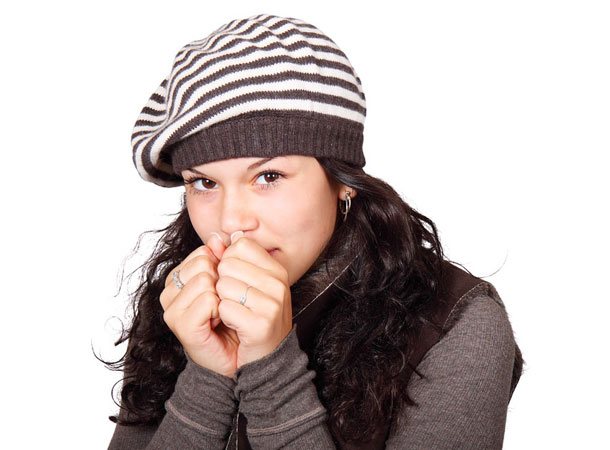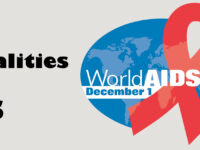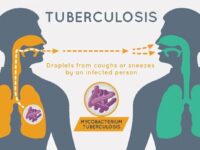As the leaves change and chillier weather sets in across the country, certain illnesses rise to their peak and spread throughout schools and workplaces.
Due to the evolution from hot to milder air and the piling of children back into schools, a mess of germs sparks the start of a new season of illnesses that sweep through every corner of the country.
1. Flu
Flu is a major killer of vulnerable people. People aged 65 and over and people with long-term health conditions, including diabetes and kidney disease, are particularly at risk.
2. Common Colds
While colds are not completely debilitating, it can be bothersome and inconvenient. Mayo Clinic recommended to always follow a good hygiene to protect against this disease. Also, cover your mouth and nose with tissues when you cough or sneeze if you start getting the sniffle. Pump your body with vitamin C, which you can get from eating fruits or taking supplements.
3. Norovirus
Norovirus, which is also known as the “winter vomiting disease,” causes gastroenteritis outbreaks that are more commonly known as the stomach flu. The disease happens all year round but it’s more common during the winter season. Follow these tips previously reported on Latinos Health for best defense against the norovirus.
4. Asthma
Cold air can exacerbate asthma symptoms, such as shortness of breath and wheezing. Rain and wind also stir up allergens, which can make asthma worse. Additionally, working out in cold temperatures can be especially problematic — the cold air causes bronchoconstriction (narrowing of the airways), thus making it even harder to breathe.
5. Painful joints
Many people with arthritis say their joints become more painful in winter, though it’s not clear why this is the case. Only joint symptoms such as pain and stiffness are affected by the weather. There’s no evidence that changes in the weather cause joint damage.
6. Cold hands
Raynaud’s phenomenon is a common condition that makes your fingers and toes change colour and become very painful in cold weather. Fingers can go white, then blue, then red, and throb and tingle. It’s a sign of poor circulation in the small blood vessels of the hands and feet. In severe cases, medication can help, but most people live with their symptoms.
7. Dry skin
Dry skin is a common condition and is often worse during the winter, when environmental humidity is low.
Moisturising is essential during winter. Contrary to popular belief, moisturising lotions and creams aren’t absorbed by the skin. Instead, they act as a sealant to stop the skin’s natural moisture evaporating away.
8. Sore Throat
A certain virus and bacteria is responsible for a sore throat. Your throat becomes itchy, harsh, and sometime gets inflamed. You can apply the following home remedies to get rid of sore throat naturally.
9. Allergy
Allergy is another most common seasonal disease. It causes due to dry weather, dust, mites, damp around, and even from your foods. When you come up with allergy, you may feel trouble in breathing.
10. Migraine and Headache
Migraine and headache are two painful diseases. Not only in winter, these problems can catch you in all season. Migraine generally happens due to dehydration, weather change, stress, hormonal change in women, and some other reasons.
11. Heart Attack
Cold snaps can increase blood pressure, which puts more strain on the heart. Your heart also has to work harder to keep your body warm during the winter months. Biological studies have also shown that cold temperatures can contribute to atherosclerotic plaque in blood vessels. Lower temperatures activate brown fat, which converts fat to heat. This is different from the white, and more common, type — what we normally think of when we think of fat.
12. Pneumonia
Pneumonia, inflammation of the lungs, occurs more in the winter. The flu virus is one of the most common causes of viral pneumonia — and since the flu often occurs in the winter, so does pneumonia. It causes the small air sacs in your lungs (alveoli) to fill with fluid. This, coupled with your body’s immune response of sending white blood cells to the area to fight infection, can make it very hard to breathe. Most healthy people recover within one to three weeks. However, it can be life-threatening for at-risk populations, such as children and the elderly.
Sources:
http://www.nhs.uk/Livewell/winterhealth/Pages/Winterhealthrisks.aspx
http://www.latinoshealth.com/articles/16736/20160121/top-5-winter-diseases-to-watch-out-for.htm
http://www.thetwoangles.com/common-winter-diseases-and-easy-remedies/
http://conditions.healthgrove.com/stories/10031
http://www.accuweather.com/en/weather-news/fall-winter-illnesses-flu-noro/34682492
https://pixabay.com/en/girl-cold-freeze-woman-hat-winter-15715/














